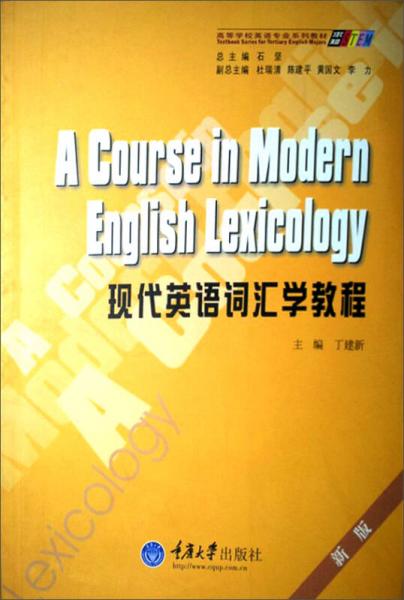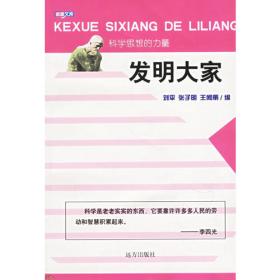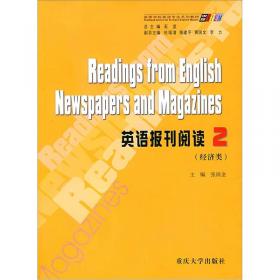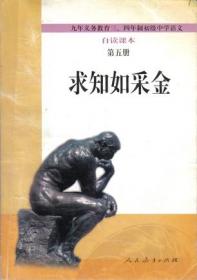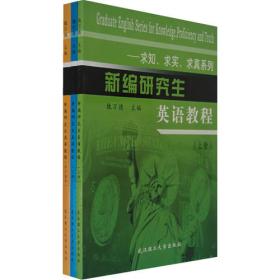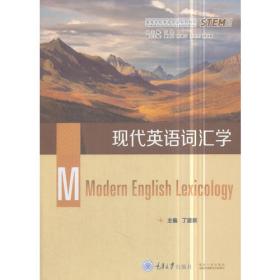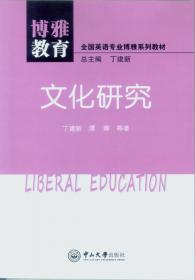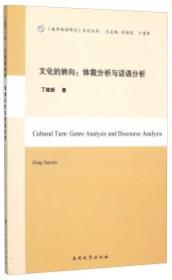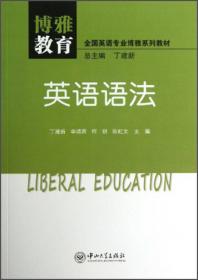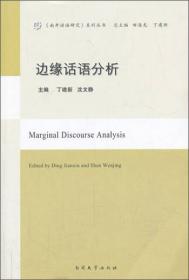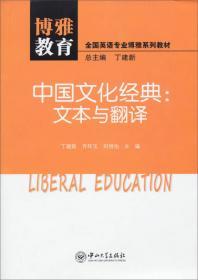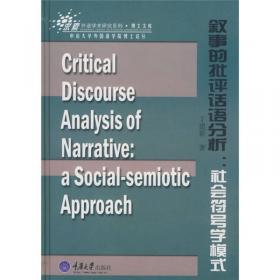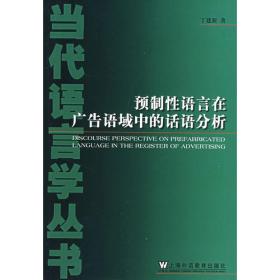求知高等学校英语专业系列教材:现代英语词汇学教程(新版)
出版时间:
2012-11
版次:
2
ISBN:
9787562432104
定价:
25.00
装帧:
平装
开本:
16开
纸张:
胶版纸
页数:
182页
字数:
202千字
正文语种:
简体中文,英语
24人买过
-
《求知高等学校英语专业系列教材:现代英语词汇学教程(新版)》是《求知高等学校英语专业系列教材》之一,它面向英语专业本科学生,对词汇学的一些传统内容进行了合理的整合,同时又吸收了近年来词汇研究的诸多新成果,涵盖了词汇与语法的关系、英语词汇的词源学研究、构词法、词的意义及意义关系、词的语用研究、多词表达(含搭配、词组和习语等)及利用语料库考察词汇型式等主要论题,还附有对中国英语学习者学习词汇十分有用的一些工具性内容,如常用词根表、词缀表等。各章练习力图式样灵活,使学生无需死记硬背就可以巩固所学知识。《求知高等学校英语专业系列教材:现代英语词汇学教程(新版)》既有共时的研究,又有历时的视角,试图使学生在掌握词汇学的基本概念和内容的同时,将他们引导到词汇这一英语语言中最具人文色彩的部分。 丁建新,男。英语语言文学博士。现任职于中山大学外语学院英语系,人选中山大学人才引进“百人计划”和广东省高校“千百十工程”培养对象。2004年曾受“中山大学岭南基金”资助在香港城市大学英语与传播系做学术访问和研究工作。获2006年“国家留学基金”。主持国家社会科学基金项目“叙事的社会符号学研究”以及广东省英语教改与实践培育项目“功能语言学视角中的高校应用英语教改研究与实践”。在重要学术期刊及大学学报上发表文章二十余篇。完成专著《预制性语言在广告语域中的话语分析》、《批评视野中的语言研究》(与廖益清合作)和《叙事的批评话语分析:社会符号学模式》三部。主编《功能语言学的理论与应用第八届全国功能语言学研讨会论文集》。主持翻译“伦敦语言学派”创始人弗斯论文集。研究方向:功能语言学、批评语言学、体裁分析、翻译理论与实践。 1 Introduction. Word, Vocabulary and Lexicology
1.1 The notion of 'word'
1.1.1 Do words exist?
1.1.2 Bloomfield's definition of word
1.1.3 Characteristics of words
1.2 The organization of English vocabulary
1.2.1 The syntagmatic and paradigmatic relations
1.2.2 Word classes
1.2.3 Lexical fields
1.3 Lexicology and other levels of linguistic analysis
1.3.1 Lexicology and phonology
1.3.2 Lexis and grammar:two forms of patterning
1.3.3 Lexicology and semantics
1.4 Summary
Exercises
2 English Vocabulary:A Historical Perspective
2.1 The Indo-European language family
2.2 The English people and the English language
2.3 The development of English vocabulary
2.3.1 The Old English period
2.3.2 The Middle English period
2.3.3 Modern English period
2.4 Summary
Exercises
3 Borrowing as a Source of English Word-Stock
3.1 The size of English word-stock
3.2 The native words of the English language
3.3 Borrowing an overview
3.4 Major sources of borrowing
3.4.1 Latin borrowings
3.4.2 Scandinavian influences
3.4.3 French loan words
3.4.4 Greek adoptions
3.5 Minor sources of borrowing
3.6 Influences of borrowings
3.7 Summary
Exercises
4 Major Processes of Word Formation
4.1 Morpheme, root and affix
4.2 Derivation and compounding
4.3 Prefixation
4.4 Suffixation
4.5 Compounding
4.5.1 Basic features of compounds
4.5.2 Classification of compounds
4.5.3 The syntax of compounds
4.6 Summary
Exercises
5 Minor Processes of Word Formation
5.1 Blending
5.2 Back-formation
5.3 Initialism
5.3.1 Abbreviation
5.3.2 Acronyms
5.4 Clipping
5.5 Aphesis
5.6 Analogy
5.6.1 Single words formed by analogy
5.6.2 Phrases formed by analogy
5.7 Reduplication
5.8 Words from proper names
5.8.1 Words from names of people
5.8.2 Words from names of places
5.8.3 Words from names of books
5.8.4 Words from trademarks
5.9 Summary
Exercise
6 Word Meaning and Meaning Relations
6.1 Conventionality versus motivation
6.2 Meanings of meaning
6.3 Four kinds of meaning
6.3.1 Denotation and reference
6.3.2 Denotation and sense
6.3.3 Denotation and connotation
6.4 Meaning relations
6.4.1 Synonymy
6.4.2 Antonymy
6.4.3 Hierarchical meaning relations — hyponymy and meronymy
6.5 Semantic field and componential analysis
6.6 Word meaning and context
6.6.1 Types of context
6.6.2 The role of context
6.7 Summary
Exercises
7 Words in Use
7.1 The OED model
7.1.1 Core vocabulary
7.2 The register model
7.2.1 Dialects
7.2.2 Diatypes
7.3 Summary
Exercises
8 Multi-word Lexical Units: Collocation, Lexical Phrase and Idiom
8.1 The research tradition of prefabricated language
8.2 Collocations
8.2.1 Meaning by collocation
8.2.2 The typology of collocations
8.2.3 Investigating lexis: corpus approach to collocations
8.3 Lexical phrases
8.3.1 The definition of lexical phrase
8.3.2 Functions of lexical phrases
8.3.3 Lexical phrases and language teaching
8.4 Idioms
8.4.1 The definition and main features of idioms
8.4.2 The categorization of idioms
8.4.3 The meaning of idioms
8.5 Implications of linguistic prefabrication
8.6 Summary
Exercises
9 Lexicology and Lexicography
Appendix 1 Common Prefixes
Appendix 2 Common Suffixes
Appendix 3 Common Roots
Appendix 4 Lexicology Terms (English-Chinese)
Appendix 5 Vocabulary
Key to Exercises
References
-
内容简介:
《求知高等学校英语专业系列教材:现代英语词汇学教程(新版)》是《求知高等学校英语专业系列教材》之一,它面向英语专业本科学生,对词汇学的一些传统内容进行了合理的整合,同时又吸收了近年来词汇研究的诸多新成果,涵盖了词汇与语法的关系、英语词汇的词源学研究、构词法、词的意义及意义关系、词的语用研究、多词表达(含搭配、词组和习语等)及利用语料库考察词汇型式等主要论题,还附有对中国英语学习者学习词汇十分有用的一些工具性内容,如常用词根表、词缀表等。各章练习力图式样灵活,使学生无需死记硬背就可以巩固所学知识。《求知高等学校英语专业系列教材:现代英语词汇学教程(新版)》既有共时的研究,又有历时的视角,试图使学生在掌握词汇学的基本概念和内容的同时,将他们引导到词汇这一英语语言中最具人文色彩的部分。
-
作者简介:
丁建新,男。英语语言文学博士。现任职于中山大学外语学院英语系,人选中山大学人才引进“百人计划”和广东省高校“千百十工程”培养对象。2004年曾受“中山大学岭南基金”资助在香港城市大学英语与传播系做学术访问和研究工作。获2006年“国家留学基金”。主持国家社会科学基金项目“叙事的社会符号学研究”以及广东省英语教改与实践培育项目“功能语言学视角中的高校应用英语教改研究与实践”。在重要学术期刊及大学学报上发表文章二十余篇。完成专著《预制性语言在广告语域中的话语分析》、《批评视野中的语言研究》(与廖益清合作)和《叙事的批评话语分析:社会符号学模式》三部。主编《功能语言学的理论与应用第八届全国功能语言学研讨会论文集》。主持翻译“伦敦语言学派”创始人弗斯论文集。研究方向:功能语言学、批评语言学、体裁分析、翻译理论与实践。
-
目录:
1 Introduction. Word, Vocabulary and Lexicology
1.1 The notion of 'word'
1.1.1 Do words exist?
1.1.2 Bloomfield's definition of word
1.1.3 Characteristics of words
1.2 The organization of English vocabulary
1.2.1 The syntagmatic and paradigmatic relations
1.2.2 Word classes
1.2.3 Lexical fields
1.3 Lexicology and other levels of linguistic analysis
1.3.1 Lexicology and phonology
1.3.2 Lexis and grammar:two forms of patterning
1.3.3 Lexicology and semantics
1.4 Summary
Exercises
2 English Vocabulary:A Historical Perspective
2.1 The Indo-European language family
2.2 The English people and the English language
2.3 The development of English vocabulary
2.3.1 The Old English period
2.3.2 The Middle English period
2.3.3 Modern English period
2.4 Summary
Exercises
3 Borrowing as a Source of English Word-Stock
3.1 The size of English word-stock
3.2 The native words of the English language
3.3 Borrowing an overview
3.4 Major sources of borrowing
3.4.1 Latin borrowings
3.4.2 Scandinavian influences
3.4.3 French loan words
3.4.4 Greek adoptions
3.5 Minor sources of borrowing
3.6 Influences of borrowings
3.7 Summary
Exercises
4 Major Processes of Word Formation
4.1 Morpheme, root and affix
4.2 Derivation and compounding
4.3 Prefixation
4.4 Suffixation
4.5 Compounding
4.5.1 Basic features of compounds
4.5.2 Classification of compounds
4.5.3 The syntax of compounds
4.6 Summary
Exercises
5 Minor Processes of Word Formation
5.1 Blending
5.2 Back-formation
5.3 Initialism
5.3.1 Abbreviation
5.3.2 Acronyms
5.4 Clipping
5.5 Aphesis
5.6 Analogy
5.6.1 Single words formed by analogy
5.6.2 Phrases formed by analogy
5.7 Reduplication
5.8 Words from proper names
5.8.1 Words from names of people
5.8.2 Words from names of places
5.8.3 Words from names of books
5.8.4 Words from trademarks
5.9 Summary
Exercise
6 Word Meaning and Meaning Relations
6.1 Conventionality versus motivation
6.2 Meanings of meaning
6.3 Four kinds of meaning
6.3.1 Denotation and reference
6.3.2 Denotation and sense
6.3.3 Denotation and connotation
6.4 Meaning relations
6.4.1 Synonymy
6.4.2 Antonymy
6.4.3 Hierarchical meaning relations — hyponymy and meronymy
6.5 Semantic field and componential analysis
6.6 Word meaning and context
6.6.1 Types of context
6.6.2 The role of context
6.7 Summary
Exercises
7 Words in Use
7.1 The OED model
7.1.1 Core vocabulary
7.2 The register model
7.2.1 Dialects
7.2.2 Diatypes
7.3 Summary
Exercises
8 Multi-word Lexical Units: Collocation, Lexical Phrase and Idiom
8.1 The research tradition of prefabricated language
8.2 Collocations
8.2.1 Meaning by collocation
8.2.2 The typology of collocations
8.2.3 Investigating lexis: corpus approach to collocations
8.3 Lexical phrases
8.3.1 The definition of lexical phrase
8.3.2 Functions of lexical phrases
8.3.3 Lexical phrases and language teaching
8.4 Idioms
8.4.1 The definition and main features of idioms
8.4.2 The categorization of idioms
8.4.3 The meaning of idioms
8.5 Implications of linguistic prefabrication
8.6 Summary
Exercises
9 Lexicology and Lexicography
Appendix 1 Common Prefixes
Appendix 2 Common Suffixes
Appendix 3 Common Roots
Appendix 4 Lexicology Terms (English-Chinese)
Appendix 5 Vocabulary
Key to Exercises
References
查看详情
-
八五品
湖北省咸宁市
平均发货15小时
成功完成率92.44%
-
八五品
四川省成都市
平均发货8小时
成功完成率93.62%
-
八五品
湖南省长沙市
平均发货10小时
成功完成率95.13%
-
八五品
广东省东莞市
平均发货10小时
成功完成率90.57%
-
九品
江西省吉安市
平均发货47小时
成功完成率84.8%
-
九五品
黑龙江省哈尔滨市
平均发货13小时
成功完成率100%

 占位居中
占位居中

